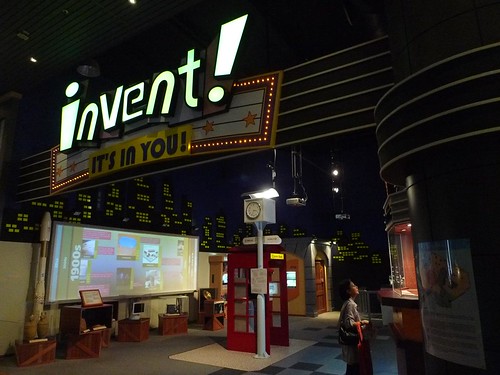
As the importance of 360 degree immersive marketing grows, companies should consider curating and choreographing experience-rich physical environments in their retail outlets. A good way to do so would be putting up 3D exhibition displays that help to augment and enrich the overall experience of one’s customers.
In this regard, the Singapore Science Centre can be considered one of the leaders of the craft. Attracting more than a million visitors a year, the Science Centre offers education, enrichment and entertainment all under one roof. As part of the PS21 EXCEL Learning Journey, I had the benefit of understanding how the Centre – considered one of the best in the world – goes about creating, developing and implementing an exhibition.
Essentially, there are four steps involved in conceptualising and rolling out an exhibition:
1) EXHIBITION STRATEGY
The first step involves understand your target audience and current competencies, so that you can devise the best ways to reach your customers and maximise your strengths while filling up gaps.
TARGET AUDIENCES
In the example of the Science Centre, they knew that their primary target audiences were children between the ages of 9 to 14 years of age, with some background in scientific knowledge, as well as “casual” adults who may have studied science way back in school. This determined how they pitch their exhibitions and necessitated the incorporation of high levels of participatory and interactive features in their exhibits.
EXPERTS & ADVISORS
The Science Centre normally hires specialists with a general scientific education (for education oriented areas) or an interest in the subject matter (for other areas). This ensures that the learning curve is shortened for newcomers and that they have a passion for what they do.
In addition, it leverages on a network of advisors who who could be experts and academics to give credence, inputs and ideas. An example is Professor Bernard Tan of the National University of Singapore, who is an expert in physics as well as a aficionado of classical music who was able to give solid inputs in a prior exhibit on sound.
CHURNING OUT GOOD IDEAS
To generate a healthy flow of innovative and creative ideas, the Science Centre embraces the following tenets at its workplace:
a) Open office spaces and layouts with inspirational features and designs
b) Cross-functional teams during the process of ideation for exhibitions and educational programmes on a space by space basis
c) A ‘no bad ideas’ policy during brainstorming exercises
d) No hierarchy, ie anybody can lay claim to an idea
e) Open meeting room concepts
2) DEVELOPMENT PHASE
In the development of the exhibits themselves, the following steps are necessary:
a) Choosing an appropriate TOPIC. This can be either planned in advance or made to be topical in nature to ride onto current concerns. An example of a ‘hot’ topic would be global warming and the current carbon crisis.
b) Brainstorming of the CONTENT. This can be done via an advisory committee with panel of experts and academics plus everyone else involved. The following questions could be asked:
– Interesting enough?
– Too profound for the layman?
– What do they want to know?
– Anything else to be covered?
c) EXHIBITS, ie how to turn an IDEA/message into an individual interactive experience?
– Mechanisms like pushing buttons, pulling levels, touch screens, flip panel, etc?
– Use of multimedia features like films, games, applications?
– Other things to consider include safety, user friendliness, durability, and feasibility (which can be done via prototyping)
d) EXHIBITION DESIGN, ie what do you want visitors to see and experience.
– What is the exhibition flow?
– Layout of exhibits?
– Themed areas?
– Colour scheme?
– Overall aesthetics?
Do note that both exhibits and exhibition design can happen CONCURRENTLY and that they can be fluid and dynamic processes.
3) BUILDING PHASE
Exhibition implementation requires one to keep an open-mind and to be flexible in one’s approach. It is common to encounter problems and obstacles that may not be evident during the initial planning stages. The best way to minimise any negative incidents is to work on prototypes and to test them in advance with target audiences.
4) REFINING & MAINTENANCE
Like any other endeavour, one should constantly monitor the responses to one’s exhibition from both spoken and unspoken behaviours. To ensure that this is done effectively, the Science Centre conducts ‘live’ testing and actively solicits visitor feedback. It also updates its content once every five years to ensure that they remain refreshing and relevant.
In addition, it organises complementary activities and programmes to enhance the overall learning experience for its visitors. These include workshops, tours, expeditions, talks and other auxiliary activities.
Examples of the fruit of the Science Centre’s efforts include the “Invent” exhibition as well as the YOG flaming tower. Do check out the pictures of these exhibits below and see if you can figure out how their process works.
